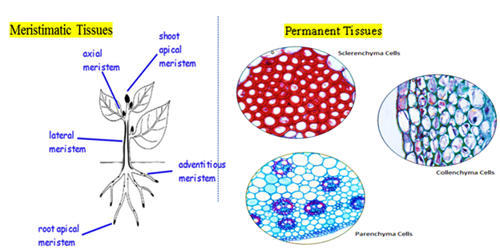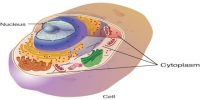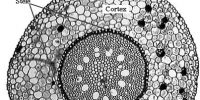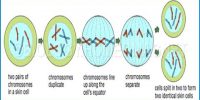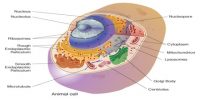Meristematic tissues are tissues that have the ability to enlarge, stretch, and differentiate into other types of cells as they mature. Cells are small, spherical, or polygonal and undifferentiated. They are either differentiated or incompletely differentiated, and they give rise to various organs of a plant and are responsible for growth.
Permanent tissue is a plant tissue that has completed its growth and differentiation and is usually incapable of meristematic activity. Cells are large and differentiated. Cells of permanent tissues are matured and assume definite shape, size, and function.
Difference Between Meristematic Tissue and Permanent Tissue:
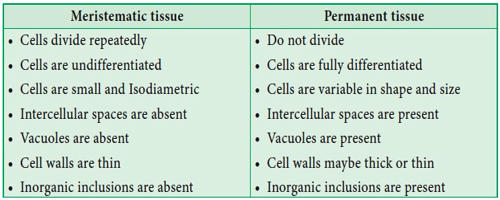
Meristematic tissue
- This tissue originates from the embryonic stage. So, they are primary tissue. It is a simple tissue.
- The cells are able to grow more cells by mitotic division. Crystals and other cell inclusions are absent.
- This tissue is present in the growing organs of the plants. Respiratory and biosynthetic activities are very high.
- This tissue is responsible for the growth of plants because the cells increase the number of cells by division.
- This tissue consists of immature cells. The cells of this tissue are generally young and immature with the power of continuous division. The cell walls are thin.
- The shape and structure of the cells are not definite. Intercellular spaces are very small or absent.
- These cells are living. Vacuoles are either small or absent. Plastids are represented by pro-plastids.
- The nucleus of the cell is large. The cells are small and isodiametric.
- It does not help mentionable in mechanical activities. The cells have the property to undergo division.
- They are not greatly involved in preparing to store and to conduct food materials.
- It provides growth to the plant.
- They do not originate from the embryonic stage. They originate from the division of meristem. It can be simple or complex.
- The cells are not able to grow more cells. Crystals and other cell inclusions are often present.
- This tissue is found all over the plant body. Respiratory and biosynthetic activities are very low.
- This tissue is not responsible for the growth of plants.
- This tissue consists of mature cells. The cell walls are thin or thick.
- The cells of this tissue are definite in shape and structure. Intercellular spaces are often conspicuous.
- Dead cells may be present. Living cells of permanent tissues usually possess central vacuole.
- The nucleus of the cell is small. The cells are large and of different shapes according to the type of tissue.
- The cells are small and isodiametric. The cells cannot normally divide.
- It gives mechanical support to the plant. Plastids are present in the living permanent cells.
- Preparing, storing, and conducting food and giving mechanical support are their main functions. It provides protection, support, conduction, photosynthesis, and storage for the plant.
